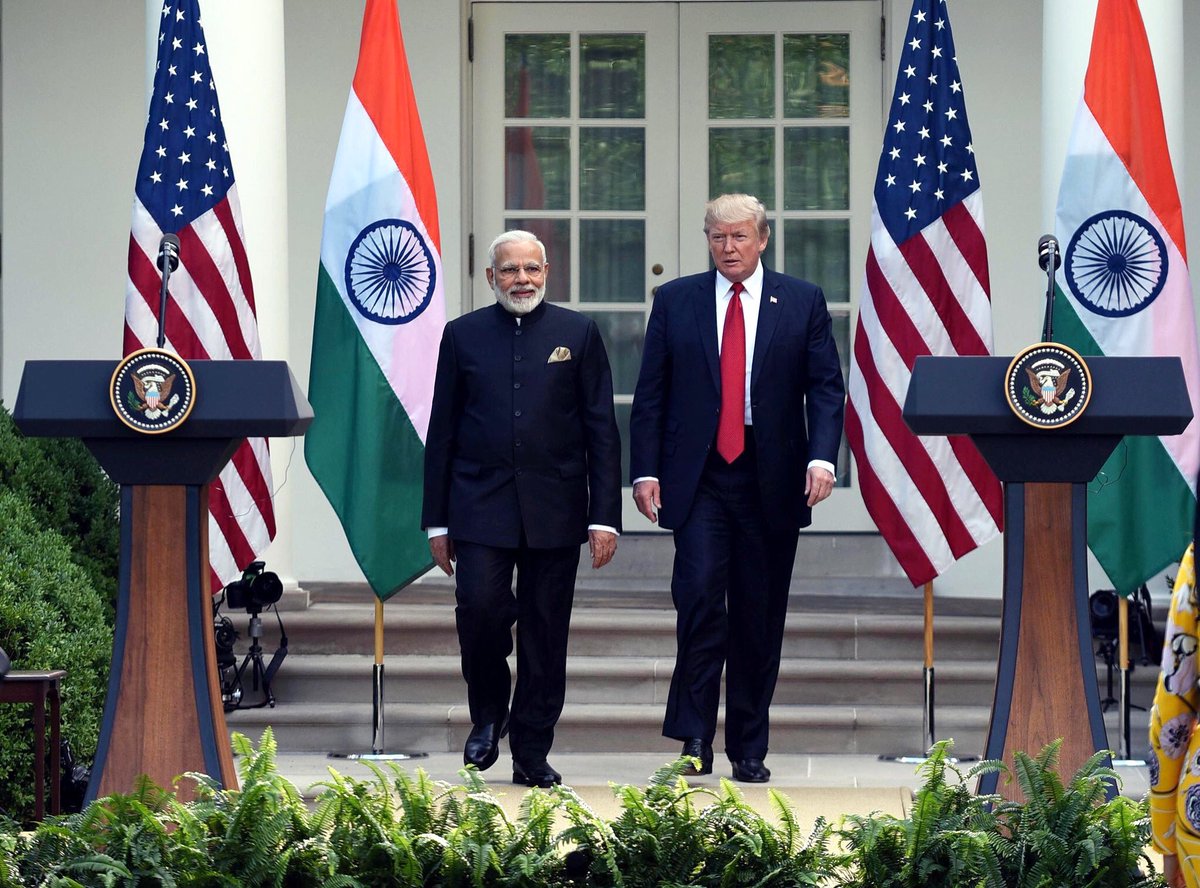US-India. Do we matter?
June 27, 2017 | Expert Insights

When Indian Prime Minister Narendra Modi, landed in the United States for the fifth time in three years, he would be the fifth major leader in the world to call on Donald Trump, the new president of United States.
During the two days he spent in the US, he met with American CEOs to wax eloquent about business opportunities in India, became the first foreign dignitary to have dinner at the White House and invited the US president’s daughter Ivanka Trump to lead an American delegation of entrepreneurs to India.
The visit was non-controversial and it also flew completely under the radar. It also begged the question – does India matter to US’ foreign policy anymore?
Taking in the wins
India walked away having netted in some crucial wins from the global superpower. Leading to Modi’s arrival, US declared Syed Salahuddin, the leader of Hizbul Mujahideen, a Kashmiri militant group, a "global terrorist". Salahuddin, a Kashmiri has been based out of Pakistan for 28 years. While in India, he has been branded a terrorist, he is hailed as a freedom fighter in Pakistan and hence, this move from the US would be a blow to Pakistan and a vindication for India.
The breathless coverage around other world leaders
Modi’s visit was met largely with silence from the American news media. While storied organizations like the New York Times and Washington Post wrote articles and op-eds about the visit, they did not provide it with the kind of breathless coverage that followed other world leaders like German Chancellor Angela Merkel, Japanese Prime Minister Shinzo Abe, and British Prime Minister Theresa May. Everything from body language to the conversations between the dignitaries was diligently reported by the press. On the other hand, Modi’s visit was a quiet affair. Even the press meet that took place after the duo met was low-key where the reporters had been told that either leader wouldn’t be taking any questions. In fact, the primary lede in a Washington Post reporting on this event focused on how in a meeting between leaders of two democracies, the press had not been given the freedom to ask questions. Modi, for his part, played it safe only sticking to generic talking points while addressing the press about his visit. There were vague declarations of elevating the relations between the two countries but nothing more.
If anything, the news media and at times even the White House seemed preoccupied with the ongoing controversies surrounding the health care bill proposed by the Republican party called the American Health Care Act and the in-party fighting that was taking place regarding it. And then the coverage was duly taken over by the US Supreme Court ruling that partially re-instated the travel ban instated by the White House. Even Trump himself spent majority of Modi’s visit tweeting about either the health care bill or insinuating that former President Barack Obama hadn’t acted aggressively against Russia targeting the US elections in 2016. Out of the over 20 tweets he published from June 24th to June 27th, only one had been about Modi’s trip.
Analysis
India’s relationship with the US has over the decades evolved. During the Cold War years, India intentionally kept its distance, much to the chagrin of US governments and founded the Non Alignment Movement. While friendly relations had been established since, it was only after the 90s, when the Indian economy started booming did US’ interests also align itself with the region. Thanks to its robust economic growth, India presented itself as a deterrent to the emergence of communist China. This relationship was further strengthened in the turn of the millennium when both countries signed the nuclear deal in 2005. Modi himself has eagerly pursued a more exalted position with the US and has personally visited the country multiple times since assuming office with mixed results.
Assessment
Our assessment is that the Trump White House would not actively harm its relationship with India but may not make it its top priority either. One of the promises that Trump made over the course of his campaign was to ensure jobs in the US didn’t get outsourced and this directly contradicts with India’s best interest as much of its recent boom in economy was due to its emergence as the ideal market for outsourcing. India for its part would also want to keep its distance as the US increasingly finds itself in the middle of the Syrian conflict. Perhaps the best recourse for India is to fly under the radar and pursue bilateral trade deals that serve its interests and try and motivate US companies to invest in the Indian economy.








Comments